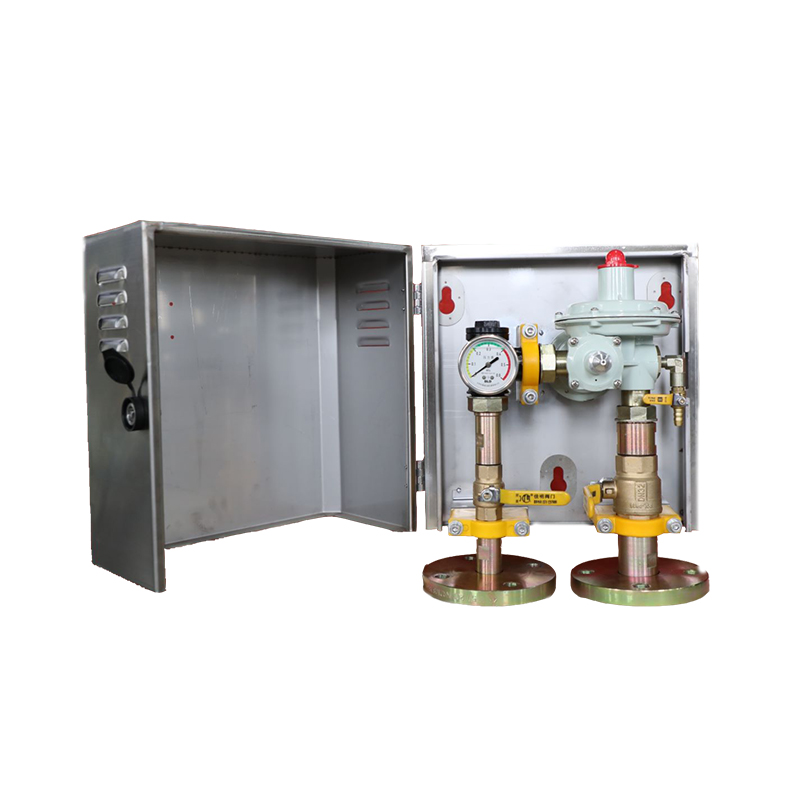
Dec . 04, 2024 16:34
Back to list
Gas Pressure Regulation Valve for Efficient System Performance and Safety
Understanding Gas Pressure Reducing Valves
Gas pressure reducing valves (PRVs) are critical components in various industrial and residential applications, ensuring that gas is delivered at a safe and manageable pressure. These devices play a crucial role in the distribution and regulation of gas, making them essential for systems that rely on gas for heating, power generation, and other functions.
What is a Gas Pressure Reducing Valve?
A gas pressure reducing valve is a mechanical device designed to lower the high pressure of gas coming from a supply line to a lower, more manageable pressure for use within a system. This is particularly important as gas is often supplied at high pressure to ensure it can travel efficiently through pipelines. However, the pressure needs to be reduced to prevent damage to equipment, ensure safety, and maintain optimal performance in applications such as HVAC systems, gas boilers, and industrial processes.
How Does It Work?
The functioning of a gas pressure reducing valve relies on the principle of pressure regulation. When gas enters the PRV, it is typically at a higher input pressure. The valve consists of a spring-loaded diaphragm that adjusts the flow of gas depending on the downstream demand for pressure. As the downstream pressure rises to the preset level, the diaphragm moves to close off the gas flow, preventing the pressure from exceeding the desired setting. Conversely, if the downstream pressure drops, the diaphragm allows more gas to flow through, maintaining a consistent output pressure.
Types of Gas Pressure Reducing Valves
There are various types of gas pressure reducing valves, each designed for specific applications
1. Single-Stage PRVs These valves reduce pressure in one step. They are simple and economical, making them suitable for applications where the required outlet pressure is not significantly lower than the inlet pressure.
2. Two-Stage PRVs These valves reduce pressure in two steps, resulting in higher efficiency and more precise control of outlet pressure. They are typically used in applications that require a substantial reduction in pressure to ensure safety and performance.
gas pressure reducing valve

3. Spring-Loaded PRVs These are designed with a spring mechanism that provides a set outlet pressure. The spring's tension can be adjusted, allowing for quick changes in pressure settings based on system requirements.
4. Pilot-Operated PRVs These valves use a pilot mechanism to control a larger valve. They are particularly useful in high-flow applications where precise control and stability are necessary, as they can respond to changes in demand more effectively.
Applications of Gas Pressure Reducing Valves
Gas pressure reducing valves are ubiquitous across various industries. In residential settings, they are often used in gas supply lines for stoves, ovens, and heaters, ensuring that appliances operate safely and efficiently. In industrial applications, PRVs regulate gases used in manufacturing processes, chemical plants, and power generation facilities, where high pressures could pose operational hazards.
Moreover, PRVs are critical in ensuring that gas delivery systems meet regulatory safety standards. Failure to maintain proper pressure can lead to equipment malfunctions, hazardous leaks, or explosions, underscoring the importance of investing in high-quality, reliable gas pressure reducing valves.
Maintenance and Safety Considerations
Regular maintenance of gas pressure reducing valves is essential to ensure their proper functioning. This includes periodic inspections to check for wear and tear, leaks, or blockages that could impede their operation. Operators should also be familiar with the specific requirements outlined by manufacturers and industry standards.
Safety is a paramount concern when dealing with pressurized gas systems. Proper installation and regular testing can help to mitigate risks associated with gas leaks. Additionally, having a plan in place for addressing emergencies and providing training for personnel can further enhance safety in environments where gas pressure reducing valves are in use.
Conclusion
Gas pressure reducing valves are vital components in managing the safe delivery of gas across various applications. By ensuring that gas is delivered at appropriate pressures, these valves not only protect equipment and enhance efficiency but also play a critical role in maintaining safety standards. As technology advances, it is likely that PRVs will continue to evolve, incorporating more sophisticated features to meet the ever-growing demands of modern industries. Understanding the importance and functionality of these devices can aid both professionals and consumers in making informed decisions regarding gas systems.
Latest news
-
Safety Valve Spring-Loaded Design Overpressure ProtectionNewsJul.25,2025
-
Precision Voltage Regulator AC5 Accuracy Grade PerformanceNewsJul.25,2025
-
Natural Gas Pressure Regulating Skid Industrial Pipeline ApplicationsNewsJul.25,2025
-
Natural Gas Filter Stainless Steel Mesh Element DesignNewsJul.25,2025
-
Gas Pressure Regulator Valve Direct-Acting Spring-Loaded DesignNewsJul.25,2025
-
Decompression Equipment Multi-Stage Heat Exchange System DesignNewsJul.25,2025

